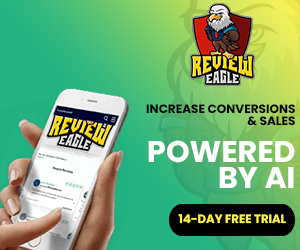Businesses are constantly seeking new ways to stay ahead of the competition. And when it comes to online advertising, one name stands out above the rest: Google. With its vast reach and powerful targeting capabilities, Google advertising has become an indispensable tool for businesses looking to boost their success on online.
In this blog post, we will delve into the world of Google advertising and uncover the strategies and tactics that can take your business to new heights. Imagine a world where your advertisements reach the right people at the right time, where every dollar spent on advertising delivers tangible results. This is the promise of Google advertising. With its sophisticated algorithms and vast user data, Google can serve your ads to the exact audience that is most likely to convert, maximizing your return on investment (ROI) like never before. But success with Google advertising goes beyond simply setting up a campaign and letting it run. It requires a deep understanding of the platform’s tools and features, as well as a strategic approach to campaign management.
We will explore everything from keyword research to ad copywriting, landing pages to conversion tracking, giving you the comprehensive knowledge you need to make the most of your Google advertising efforts. So, if you’re ready to unlock the secrets of success with Google advertising, join us on this journey as we dive deep into the world of online advertising and discover how you can boost your business to new heights.
The Importance of Target Audience Research
Regarding Google advertising, one of the most crucial steps in achieving success is conducting thorough target audience research. Understanding your audience is key to creating effective ad campaigns that resonate with your potential customers.Target audience research involves gathering data and insights about your ideal customers, such as their demographics, interests, online behavior, and purchasing habits. This information allows you to tailor your ads to their specific needs and preferences, increasing the chances of conversion.There are several methods you can use to conduct target audience research. One approach is analyzing your existing customer base. Look for common characteristics among your most loyal customers and use this information as a starting point for identifying your target audience.Another method is conducting surveys or interviews with your customers or potential customers. Ask them questions about their preferences, pain points, and motivations to gain valuable insights into what drives their purchasing decisions.
Additionally, you can utilize online tools and platforms that provide demographic data and consumer behavior patterns. Google Analytics, for example, offers valuable information about the demographics of visitors to your website.Once you have gathered enough data about your target audience, it’s time to create buyer personas. Buyer personas are fictional representations of your ideal customers based on real data and insights. They help you understand the needs, desires, and challenges of different segments within your target audience.By creating detailed buyer personas, you can craft highly targeted ad campaigns that speak directly to the specific needs and interests of each segment. This level of personalization increases the chances of capturing the attention of potential customers and driving them towards conversion.In conclusion, target audience research is a critical step in achieving success with Google advertising.
By understanding who your ideal customers are and what motivates them, you can create highly targeted ad campaigns that resonate with their needs and preferences. So take the time to conduct thorough research before launching any ad campaign on Google Ads – it will pay off in the long run.
Creating an Irresistible Lead Magnet
Capturing leads is essential for growing your business. And one of the most effective ways to attract and convert leads is by offering an irresistible lead magnet.A lead magnet is a valuable piece of content or offer that you provide to your target audience in exchange for their contact information, such as their email address. It serves as a powerful incentive for potential customers to take action and engage with your brand.To create an irresistible lead magnet, you need to understand what your target audience wants and needs.
Conducting market research and analyzing customer feedback can provide valuable insights into the pain points and challenges your audience faces.Once you have identified a problem or need that your target audience has, you can create a lead magnet that offers a solution or provides valuable information related to that problem. Some popular types of lead magnets include e-books, whitepapers, checklists, templates, webinars, and free trials.When creating your lead magnet, make sure it provides genuine value to your audience. It should be actionable, easy to consume, and address a specific pain point or challenge. The more valuable and relevant your lead magnet is, the more likely people will be willing to exchange their contact information for it.In addition to creating an irresistible lead magnet, it’s important to optimize its presentation and promotion. Design visually appealing landing pages that clearly communicate the value of your lead magnet and make it easy for visitors to sign up.Promote your lead magnet through various channels such as social media posts, email marketing campaigns, blog posts, and paid advertising. The more visibility you give it, the more opportunities you have to capture leads.
Creating an irresistible lead magnet is crucial for capturing leads in Google advertising campaigns. By understanding what your target audience wants and needs and offering them valuable content or offers in exchange for their contact information, you can attract qualified leads who are more likely to convert into customers. So invest time and effort into creating a compelling lead magnet that will drive your business forward.
Designing a High-Converting Landing Page
When it comes to Google advertising, designing a high-converting landing page is essential for maximizing the effectiveness of your ad campaigns. A landing page is the web page where visitors land after clicking on your ad, and it plays a crucial role in driving conversions.To design a high-converting landing page, you need to consider several key elements.
Your landing page should have a clear and compelling headline that grabs the attention of visitors and communicates the value proposition of your offer.In addition to a strong headline, your landing page should have concise and persuasive copy that clearly explains the benefits of your offer. Use bullet points or short paragraphs to highlight key features or advantages that make your offer irresistible.Visual elements also play an important role in capturing the attention of visitors and conveying information quickly. Use high-quality images or videos that are relevant to your offer and help reinforce its value.
Another crucial element of a high-converting landing page is a prominent call-to-action (CTA). Your CTA should be clear, visually distinct from other elements on the page, and use action-oriented language that encourages visitors to take the desired action.To build trust with visitors and increase credibility, consider including social proof elements such as customer testimonials or reviews. These can help alleviate any doubts or concerns potential customers may have about your offer.
Lastly, optimize your landing page for mobile devices. With more people accessing the internet through smartphones and tablets, it’s essential that your landing page is responsive and provides a seamless user experience across all devices.
Designing a high-converting landing page is crucial for maximizing the effectiveness of Google advertising campaigns. By incorporating key elements such as compelling headlines, persuasive copy, visual elements, prominent CTAs, social proof, and mobile optimization, you can create landing pages that drive conversions and help grow your business. So invest time and effort into designing landing pages that are optimized for success.
Implementing Effective Call-to-Action (CTA) Strategies
In the world of Google advertising, a well-crafted call-to-action (CTA) is essential for driving conversions and achieving success. A CTA is a prompt or instruction that encourages visitors to take a specific action, such as making a purchase, signing up for a newsletter, or requesting more information.To implement effective CTA strategies in your Google advertising campaigns, consider the following tips:
1. Use action-oriented language: Your CTA should use strong and compelling language that clearly communicates what you want visitors to do. Use verbs such as “buy now,” “sign up,” or “get started” to create a sense of urgency and encourage immediate action.
2. Make it visually distinct: Your CTA should stand out from other elements on the page. Use contrasting colors, bold fonts, or buttons to make it visually distinct and easily noticeable.
3. Place it strategically: Position your CTA in a prominent location on your landing page where visitors’ attention is naturally drawn. Above the fold (the visible area without scrolling) is often an effective placement.
4. Create a sense of urgency: Encourage immediate action by incorporating words or phrases that create a sense of urgency, such as “limited time offer,” “exclusive deal,” or “act now.”
5. Offer incentives: Provide additional motivation for visitors to take action by offering incentives such as discounts, free trials, or exclusive content.
6. Test different variations: Experiment with different CTAs to see which ones resonate best with your target audience. A/B testing can help you identify the most effective wording, design, and placement for your CTAs.
7. Optimize for mobile devices: Ensure that your CTAs are easily clickable and accessible on mobile devices. Mobile optimization is crucial as more and more people use smartphones and tablets to browse the internet.
Implementing effective call-to-action (CTA) strategies is essential for driving conversions in Google advertising campaigns. By using action-oriented language, making your CTAs visually distinct, placing them strategically, creating a sense of urgency, offering incentives, testing different variations, and optimizing for mobile devices, you can encourage visitors to take the desired action and achieve success with your ad campaigns.
Harnessing the Power of Social Media Advertising
Social media has become an integral part of our daily lives. It’s no wonder that harnessing the power of social media advertising has become a key strategy for businesses looking to reach their target audience and drive conversions.Social media advertising offers several unique advantages over traditional forms of advertising. It allows you to target specific demographics, interests, behaviors, and locations with precision. This level of targeting ensures that your ads are seen by the right people who are most likely to be interested in your products or services.To harness the power of social media advertising effectively, consider the following strategies:
1. Define your goals: Before launching any social media ad campaign, clearly define your goals. Are you looking to increase brand awareness? Drive website traffic? Generate leads? Each goal requires a different approach and targeting strategy.
2. Choose the right platforms: Not all social media platforms are created equal when it comes to advertising. Research which platforms are most popular among your target audience and focus your efforts on those platforms.
3. Understand platform algorithms: Each social media platform has its own algorithm that determines how content is shown to users. Stay up-to-date with algorithm changes and adjust your ad strategy accordingly.
4. Create compelling ad content: Social media users are constantly bombarded with content, so it’s important to create ads that stand out from the crowd. Use eye-catching visuals, compelling copy, and clear calls-to-action to capture attention and drive engagement.
5. Test and optimize: Social media advertising is not a one-size-fits-all approach. Continuously test different ad formats, targeting options, and messaging to identify what resonates best with your audience. Use the data and insights gained from testing to optimize your campaigns for maximum effectiveness.
6. Engage with your audience: Social media is a two-way street. Encourage engagement by responding to comments, messages, and reviews in a timely manner. Building relationships with your audience can lead to increased brand loyalty and word-of-mouth referrals.
7. Track and analyze results: Use social media analytics tools to track the performance of your ad campaigns. Analyze key metrics such as reach, engagement, click-through rates, conversions, and return on investment (ROI). Use this data to make informed decisions about future campaigns.
Harnessing the power of social media advertising is essential for businesses looking to reach their target audience effectively. By defining your goals, choosing the right platforms, understanding platform algorithms, creating compelling ad content, testing and optimizing, engaging with your audience, and tracking results, you can leverage social media advertising to drive conversions and achieve success in the digital age.
Utilizing Email Marketing Automation
Email marketing automation has revolutionized the way businesses communicate with their customers. It allows you to send targeted messages at specific times or based on specific actions taken by subscribers – all without manual intervention.By utilizing email marketing automation effectively in your Google advertising campaigns, you can nurture leads through personalized email sequences that guide them towards conversion.Here are some key strategies for utilizing email marketing automation:
1. Segment your email list: Divide your email list into segments based on demographics or behaviors. This allows you to send more targeted messages that resonate with each segment’s specific needs or interests.
2. Create personalized email sequences: Develop automated email sequences that deliver relevant content or offers based on the actions subscribers take. For example, if a subscriber downloads a lead magnet, you can send them a series of emails that provide additional value and eventually lead them towards making a purchase.
3. Use dynamic content: Incorporate dynamic content into your emails to further personalize the experience for each subscriber. Dynamic content allows you to display different content blocks based on specific criteria, such as location or past purchase history.
4. A/B test your emails: Experiment with different subject lines, email copy, visuals, and calls-to-action to identify what resonates best with your audience. A/B testing can help you optimize your email campaigns for maximum engagement and conversions.
5. Automate follow-ups and reminders: Set up automated follow-up emails or reminders for subscribers who have not taken the desired action. This helps keep your brand top-of-mind and encourages them to take the next step.
6. Monitor email performance: Track key metrics such as open rates, click-through rates, conversion rates, and unsubscribe rates to gauge the effectiveness of your email campaigns. Use this data to make data-driven decisions about future campaigns.
7. Integrate with other marketing tools: Integrate your email marketing automation platform with other marketing tools such as customer relationship management (CRM) systems or landing page builders to streamline your workflow and ensure seamless data synchronization.
Utilizing email marketing automation is a powerful strategy for nurturing leads and driving conversions in Google advertising campaigns. By segmenting your email list, creating personalized email sequences, using dynamic content, A/B testing your emails, automating follow-ups and reminders, monitoring email performance, and integrating with other marketing tools, you can leverage the power of automation to maximize the impact of your email marketing efforts.
Leveraging Content Marketing for Lead Generation
Content marketing has become an essential strategy for businesses looking to generate leads in today’s digital age. By creating valuable and relevant content that resonates with their target audience, businesses can attract qualified leads and nurture them towards conversion.To leverage content marketing effectively for lead generation in your Google advertising campaigns, consider the following strategies:
1. Understand your target audience: Before creating any content, it’s crucial to have a deep understanding of your target audience. Conduct market research, analyze customer data, and develop buyer personas to identify the pain points, needs, and interests of your ideal customers.
2. Create valuable and relevant content: Develop high-quality content that provides value to your target audience. This can include blog posts, e-books, whitepapers, videos, infographics, podcasts, or webinars. Focus on addressing their pain points or providing solutions to their challenges.
3. Optimize content for search engines: Incorporate relevant keywords into your content to improve its visibility in search engine results pages (SERPs). Conduct keyword research to identify the terms and phrases that your target audience is searching for.
4. Promote your content: Use various channels such as social media, email marketing, guest blogging, or influencer partnerships to promote your content and drive traffic to your website or landing pages.
5. Gate valuable content behind lead capture forms: To generate leads from your content marketing efforts, gate valuable resources such as e-books or whitepapers behind lead capture forms. This allows you to collect contact information from interested prospects in exchange for access to the resource.
6. Nurture leads through email marketing: Once you have captured leads through gated content, use email marketing automation to nurture them with personalized email sequences that provide additional value and guide them towards conversion.
7. Track and analyze performance: Monitor key metrics such as website traffic, engagement rates, conversion rates from gated content downloads or email sign-ups to evaluate the effectiveness of your content marketing efforts. Use this data to refine your strategy and optimize future campaigns.
Leveraging content marketing is a powerful strategy for generating leads in Google advertising campaigns. By understanding your target audience, creating valuable and relevant content, optimizing for search engines, promoting your content, gating valuable resources, nurturing leads through email marketing, and tracking performance, you can attract qualified leads and drive conversions through your content marketing efforts.
Optimizing Your Website for Maximum Lead Capture
When it comes to lead generation in Google advertising campaigns, optimizing your website is crucial for maximizing the number of leads you capture. Your website serves as the central hub where potential customers land after clicking on your ads. It’s important to create a seamless user experience that encourages visitors to take action and provide their contact information.Here are some key strategies for optimizing your website for maximum lead capture:
1. Clear and compelling call-to-action (CTA): Place prominent CTAs throughout your website that clearly communicate the desired action you want visitors to take. Use action-oriented language and make sure they stand out visually from other elements on the page.
2. Simplify lead capture forms: Keep lead capture forms simple and easy to fill out. Only ask for essential information such as name and email address. The shorter the form, the more likely visitors will be willing to provide their contact information.
3. Offer incentives: Provide additional motivation for visitors to provide their contact information by offering incentives such as exclusive content or discounts. Clearly communicate the value they will receive in exchange for their information.
4. Optimize landing pages: Design landing pages that are specifically tailored to each ad campaign or offer. Ensure that they have a clear headline, concise copy that highlights the benefits of your offer, visually appealing images or videos, and a prominent CTA.
5. Mobile optimization: With more people accessing websites through mobile devices, it’s crucial that your website is optimized for mobile users. Ensure that it loads quickly, displays properly on different screen sizes, and has easy-to-use navigation.
6. Test different variations: A/B test different elements of your website such as headlines, copy, visuals, or CTAs to identify what resonates best with your audience. Use data and insights gained from testing to optimize your website for maximum lead capture.
7. Monitor user behavior: Use website analytics tools to track user behavior on your website. Analyze metrics such as bounce rate, time spent on page, or click-through rates to identify areas for improvement and optimize the user experience.
Optimizing your website is essential for maximizing lead capture in Google advertising campaigns. By incorporating clear and compelling CTAs, simplifying lead capture forms, offering incentives, optimizing landing pages, mobile optimization, testing different variations, and monitoring user behavior, you can create a seamless user experience that encourages visitors to provide their contact information and become leads.
Tracking and Analyzing Lead Generation Metrics
Tracking and analyzing lead generation metrics is crucial for evaluating the effectiveness of your Google advertising campaigns and making data-driven decisions about future strategies. By monitoring key performance indicators (KPIs), you can gain valuable insights into the success of your lead generation efforts and identify areas for improvement.Here are some key lead generation metrics to track and analyze:
1. Conversion rate: The conversion rate measures the percentage of visitors who take the desired action on your website or landing page. It could be signing up for a newsletter, downloading a resource, or making a purchase. A high conversion rate indicates that your ad campaigns are effectively driving qualified leads.
2. Cost per acquisition (CPA): The CPA measures how much it costs you to acquire each new customer or lead through your ad campaigns. It’s calculated by dividing the total cost of your ads by the number of conversions generated. Tracking CPA helps you evaluate the efficiency of your ad spend.
3. Click-through rate (CTR): The CTR measures the percentage of people who click on your ads after seeing them. A high CTR indicates that your ads are compelling and relevant to users’ search queries. Low CTRs may indicate that your ads need improvement or that you’re targeting the wrong audience.
4. Return on ad spend (ROAS): The ROAS measures the revenue generated for every dollar spent on advertising. It’s calculated by dividing the total revenue generated by your ad campaigns by the total cost of those campaigns. A high ROAS indicates that your ad campaigns are generating a positive return on investment.
5. Lead quality: Assessing lead quality is crucial for evaluating the effectiveness of your lead generation efforts. Track metrics such as lead-to-customer conversion rate, average deal size, or customer lifetime value to determine if the leads generated through your ad campaigns are turning into profitable customers.
6. Attribution: Attribution tracking helps you understand which channels or touchpoints contribute most to lead generation and conversions. Use tools such as Google Analytics to track how users interact with your website and attribute conversions to specific marketing channels or campaigns.
7. Return on investment (ROI): ROI measures the overall profitability of your Google advertising campaigns. It takes into account both the revenue generated and the cost of running those campaigns. By calculating ROI, you can determine if your ad spend is generating a positive return and make informed decisions about future investments.
Tracking and analyzing lead generation metrics is essential for evaluating the success of your Google advertising campaigns and optimizing future strategies. By monitoring conversion rates, CPA, CTRs, ROAS, lead quality, attribution, and ROI, you can gain valuable insights into the effectiveness of your lead generation efforts and make data-driven decisions about how to improve them.
Conclusion: Taking Action and Achieving Lead Generation Success
Effective lead generation is crucial for businesses looking to grow their customer base and drive revenue in today’s competitive digital landscape. By implementing strategies such as target audience research, creating irresistible lead magnets, designing high-converting landing pages, implementing effective call-to-action strategies, harnessing social media advertising power, utilizing email marketing automation, leveraging content marketing, optimizing websites for maximum lead capture, and tracking and analyzing lead generation metrics, businesses can unlock the secrets of success with Google advertising and achieve their lead generation goals.
However, it’s important to remember that success with lead generation requires continuous effort and adaptation. The digital landscape is constantly evolving, and consumer behaviors and preferences are always changing. It’s crucial to stay up-to-date with the latest trends and technologies in order to stay ahead of the competition.
So take action today by implementing the strategies outlined in this blog post. Conduct thorough target audience research to understand your ideal customers. Create irresistible lead magnets that provide value to your audience. Design high-converting landing pages that drive conversions. Implement effective call-to-action strategies that encourage visitors to take action.
Harness the power of social media advertising to reach your target audience effectively. Utilize email marketing automation to nurture leads towards conversion. Leverage content marketing to attract qualified leads. Optimize your website for maximum lead capture.
Track and analyze key lead generation metrics to evaluate the effectiveness of your efforts.By taking these actions and continuously refining your strategies based on data-driven insights, you can achieve lead generation success with Google advertising and propel your business forward in the digital age. So don’t wait – start unlocking the secrets of success today!
The AI Web Agency is dedicated to helping our clients grow their business. Growth is the DNA and foundation of our focus in everything we provide to our clients. The AI Web Agency offers marketing services that make our client’s phones ring, their websites fill with visitors, and keeps their existing clients engaged. We deliver this growth both online and offline, to local businesses and national brands. We leverage the power of AI to provide precision personalized content delivered via Email, Web, and Social Media to help businesses grow.









